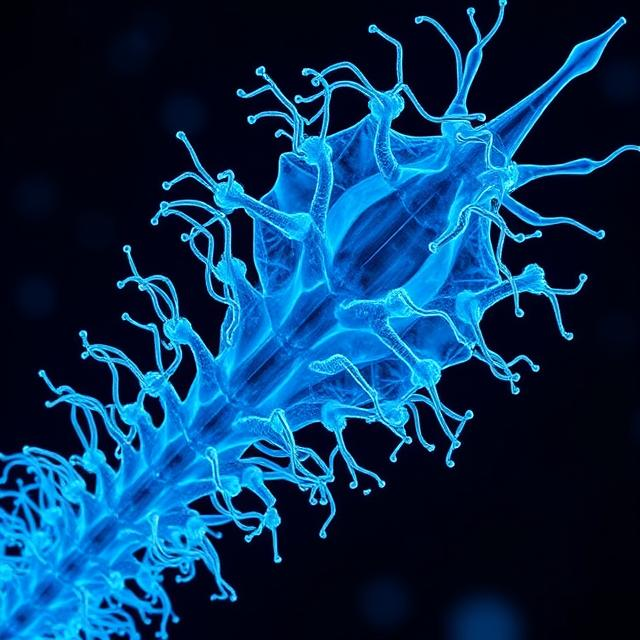In the vast realm of biotechnology and pharmaceuticals, microorganisms are the unsung heroes — the living engines behind everything from antibiotics and enzymes to vaccines and biologics. These minuscule life forms have been foundational to scientific breakthroughs for over a century, yet with the advent of synthetic biology, bioprocessing, and bioinformatics, their utility is undergoing a renaissance.

Today, as the industry pivots toward precision medicine, sustainable production, and novel therapeutics, the strategic role of microbes is growing ever more central. This article explores the full landscape of microorganisms in biopharma — from fermentation and gene expression systems to emerging applications in vaccine platforms, biologic manufacturing, and even microbiome-based therapies.
The Foundation: Microbial Fermentation in Biopharma
Microbial fermentation remains the backbone of biologic drug production. By harnessing the metabolic power of microbes in controlled environments, scientists can mass-produce bioactive compounds with high fidelity.
Key Microorganisms in Fermentation:
- Escherichia coli (E. coli): The most commonly used prokaryote in recombinant protein production. It grows quickly, is well understood genetically, and allows high-yield expression of simple proteins.
- Saccharomyces cerevisiae (Yeast): Eukaryotic, more suitable for expressing complex proteins with proper post-translational modifications (PTMs).
- Pichia pastoris: A methylotrophic yeast that combines the advantages of bacterial growth speed with the eukaryotic machinery for glycosylation.
- Bacillus subtilis: Known for robust secretion pathways, often used for enzyme production.
- Streptomyces species: Natural producers of many antibiotics, including streptomycin and tetracycline.
Applications:
- Insulin production using E. coli
- Hepatitis B vaccine expression in yeast
- Enzyme therapies for rare diseases
- Industrial enzymes for manufacturing and diagnostics
2. Microbial Factories for Biologics
While mammalian systems like CHO cells dominate monoclonal antibody production, microbial systems are carving out unique niches, especially for:
- Biosimilars: Cost-effective production of generic biologics.
- Therapeutic enzymes: Such as asparaginase used in leukemia treatment.
- Vaccine adjuvants and antigens: Produced at scale using bacterial expression systems.
Example: Sanofi’s flu vaccine production partially relies on Baculovirus expression vectors in insect cells — another evolution stemming from microbial platforms.
3. Microbes and Synthetic Biology: Programming Life
With the rise of synthetic biology, researchers can now reprogram microbes to perform custom tasks, from sensing environmental toxins to producing complex molecules.
Microbes as Programmable Tools:
- CRISPR-Cas systems originated from bacterial immune mechanisms.
- Engineered E. coli strains are now used to produce synthetic cannabinoids, antibiotics, and even opioids (e.g., thebaine).
Companies to Watch:
- Ginkgo Bioworks (Boston): Engineering custom organisms for pharma and fragrance.
- Zymergen (California): Microbial strain development using machine learning.
- Evonetix (UK): DNA synthesis and biofoundry development for microbial design.
4. Probiotics, Microbiome, and Live Biotherapeutics
The human microbiome — a collection of trillions of bacteria, archaea, and fungi — is an emerging therapeutic frontier. Dysbiosis (imbalance in microbial communities) has been linked to:
- Autoimmune diseases (e.g., Crohn’s)
- Neurological disorders (e.g., Parkinson’s, autism)
- Obesity and metabolic syndrome
Therapeutic Strategies:
- Fecal Microbiota Transplantation (FMT)
- Next-gen probiotics (Live Biotherapeutic Products) from companies like Seres Therapeutics (USA) and MaaT Pharma (France)
- Microbiome modulation via prebiotics, phages, or engineered microbes
5. Environmental and Metabolic Engineering of Microorganisms
Beyond healthcare, microorganisms enable sustainable chemical production — an increasingly strategic capability for green pharma manufacturing.
Examples:
- Corynebacterium glutamicum: Engineered for amino acid production like glutamate and lysine
- Clostridium species: Used in solvent fermentation, e.g., acetone-butanol-ethanol (ABE) production
- Methanogens and cyanobacteria: Investigated for carbon capture and renewable biofuels
These approaches are gaining traction especially in European Union-funded initiatives for sustainable biomanufacturing under the Horizon Europe framework.
6. European Microbial Biopharma Ecosystem
Europe plays a critical role in microbial biotech innovation. Notable players and initiatives include:
Leading European Institutions:
- DSM (Netherlands): Enzyme production, biosynthesis
- MaaT Pharma (France): Microbiome therapeutics for oncology
- Zymvol (Spain): Computational enzyme design
- Leiden University (Netherlands): Microbial biotechnology research
- Fraunhofer Institutes (Germany): Applied research in microbial fermentation, synthetic biology
Policy and Funding:
- EU’s Bio-Based Industries Joint Undertaking (BBI JU) backs microbial production pathways.
- EIT Health supports startups working on microbial diagnostics and therapeutics.
7. Microbes in Diagnostics and Biosensors
Microorganisms — or enzymes derived from them — also play a key role in modern diagnostics.
The Case of Glucose Oxidase:
- Derived from Aspergillus niger, this enzyme oxidizes glucose to generate hydrogen peroxide.
- Widely used in blood glucose test strips and continuous glucose monitors (CGMs).
- Pioneered in DIY biomedical engineering, such as open-source Arduino glucometers.
Other microbial enzymes in diagnostics include:
- Horseradish peroxidase (HRP) for ELISAs
- Urease for detecting urea/ammonia levels
- Luciferase (from fireflies and microbes) for luminescence assays
8. Regulatory Challenges and Safety Considerations
While microbes offer boundless potential, their use in biopharma must align with rigorous safety and regulatory frameworks.
Key Regulatory Points:
- GRAS status (Generally Recognized as Safe) is required for food-grade organisms.
- Containment and inactivation protocols must be demonstrated for genetically modified strains.
- European Medicines Agency (EMA) and FDA require extensive characterization of microbial-derived biologics.
Risks:
- Endotoxins from Gram-negative bacteria
- Horizontal gene transfer
- Antibiotic resistance markers in recombinant strains
9. Microbial Diversity: Mining Nature for New Medicines
The natural world offers a vast, largely untapped library of microbial diversity.
Unusual and Promising Microbes:
- Thermophiles (e.g., Thermus aquaticus): Heat-stable enzymes like Taq polymerase for PCR
- Halophiles: Useful for biocatalysis in high-salt environments
- Acidophiles and alkaliphiles: Useful in extreme pH processing
- Actinomycetes (like Streptomyces): Source of 60%+ of known antibiotics
Metagenomics now allows researchers to discover novel enzymes and metabolites without culturing the organisms — a revolution in drug discovery and natural product biosynthesis.
10. The Future of Microbial Biopharma
The future will likely blend:
- High-throughput screening of microbial libraries
- AI-driven metabolic modeling
- Cloud-based biofoundries for remote microbial engineering
- Modular plug-and-play bioprocess systems
Open Questions:
- Can we develop universal chassis organisms that can host multiple biosynthetic pathways?
- How do we balance IP protection with the open sharing of microbial tools?
- What new biosafety protocols will be needed for “living medicines”?
Final Thoughts
Microorganisms are not just relics of the antibiotic age — they are our living allies in the next wave of biopharma innovation. From gene therapies and vaccines to diagnostics and green biomanufacturing, the microbial toolbox is expanding rapidly, shaped by synthetic biology, computational design, and global collaboration.
As we move into a more decentralized, digitized, and democratized future of biotechnology, microorganisms will remain at the center — silent architects of the invisible revolution.
